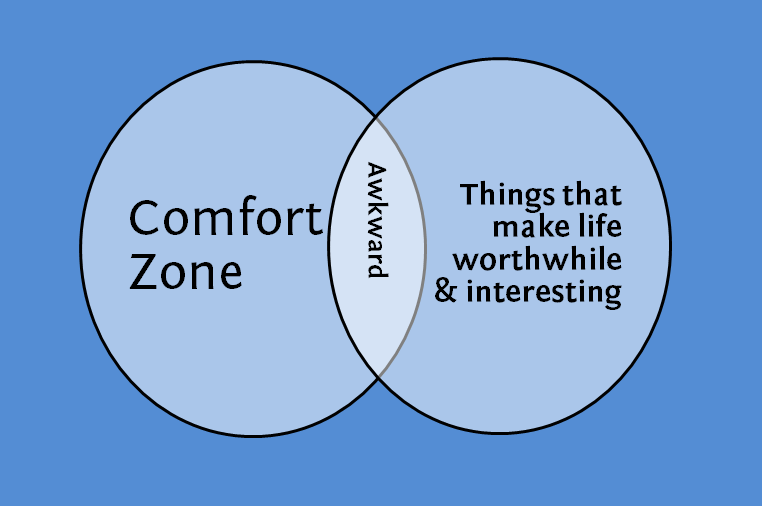Steps to Change!
Step 3: Lay Out a Road Map to Your Destination
 You wouldn’t start out on a road trip without a map…. even if you have a GPS. (It can crash.)
You wouldn’t start out on a road trip without a map…. even if you have a GPS. (It can crash.)
And you can’t start down the path toward your outcome without a “map” – a step-by-step plan of how you’re going to reach your goal. In other words, you won’t reach your destination if you don’t know how to get there.
This is obvious, yes?
You can be in Las Vegas and know you want to get to London so you head north east…but there are lots of little things that happen along the way…like the Atlantic Ocean…and Passport Control at Heathrow and so forth that can all easily prevent you from achievement.
Life IS a journey, BUT you don’t typically get paid for the journey UNTIL YOU GET TO LONDON…
…so you can’t screw around by not having a map and without FINISHING what you begin.
Success Measurement
Another reason to make a step-by-step plan to achieve your end result is so that you have an actual way to measure your success. When you force yourself to be concrete about your plan by writing it down, then at the end of each day or each week you know whether you were productive or not.
You know whether you are walking towards your goal or away from it. You can look on the map and see just where you are and what course adjustments are necessary.
Imagine your desired outcome is to lose weight. In the first step when you became clear about your quest, perhaps you set an end result like “I intend to lose 25 pounds in six months.”
Boom. Done. You don’t need to dwell on it. The finishing point is simple. It’s the journey and the landmines, oceans and passport control that are the problems…
Now if you don’t have a plan as to how you’re going to do it, what do you do on day One? You might just have a candy bar, because six months is an awful long time from now. One candy bar doesn’t hurt, you rationalize. In fact you can rationalize quite a bit until you’re actually gaining rather than losing weight!
On the other hand, if you plan exactly how you’re going to lose weight, then you know you need to lose roughly one pound per week in order to meet your goal. And to do that, you lay out a plan such as cutting out sugared soft drinks this week, cutting out candy next week, and so on. At the end of the week you weigh yourself: if you’ve lost at least one pound, you’re on track. If you haven’t done that, then you know you need to tweak your “road map.”
Legend Point: Not only have you defined what you consider success, you’ve laid out, measurable steps that help you chart and track your progress.
And that’s another important part: when you lay out your plan, you must include all the steps.
Sometimes people get discouraged or doubt themselves when they take on a big goal.
Don’t…
Legend Point: Doubt is EXTREMELY USEFUL **BUT** NEVER DOUBT your SELF in your ability to complete.
Doubt EVERYTHING else but know that no matter what happens, YOU can and will do everything it takes to get to London.
REALITY: If you’re like most people, you are extremely enthusiastic when you begin a project, but a few days in, your enthusiasm tends to disappear.
It’s when enthusiasm wanes that YOU BEGIN.
Scenario:
Suppose your outcome is to become a published author in one year.
Now imagine you created a road map where your first step was “write a book.”
The problem is that this step alone is likely to take you six months, nine months, even more. I’ve spent as little as two months and as much as 18 months writing a book.
If you’ve spent six months working on your end result and haven’t even been able to track any progress simply because you haven’t completed step One (“write a book”), how would you feel? Probably discouraged. And it’s likely you’d lose interest in this project long before six months.
“Write a book” is definitely a doable project, but it is damn difficult to achieve such a result without a lot, and I mean a lot of well conceived steps.
What you need to do at the planning stage is break up a big goal into small steps. For example, one step might be “choose a topic.” Another step might be “outline the book,” and then “write an introduction” …and so on.
See the difference? In just one or two days you could already see measurable progress. And because you’ve broken the plan up into bite-size steps, it’s not so overwhelming.
Cool thing is when you write your plan and you break these big monster projects into tiny morsels, they become more concrete in your thinking. A very good thing.
This is especially important if you are trying to make a lasting change. For example, perhaps you are trying to eat healthier, be more romantic with your partner, or stop a bad habit. If you try to make a 180 degree change in your old habit overnight, your new behavior won’t “stick.”
Scenario:
 If you wanted to start leading a more healthy life, then you would need to eat better, exercise more, and stop smoking. If you did all three of those things starting to tomorrow, there’s a good chance that it would become overwhelming and you’d slip back into your old habits.
If you wanted to start leading a more healthy life, then you would need to eat better, exercise more, and stop smoking. If you did all three of those things starting to tomorrow, there’s a good chance that it would become overwhelming and you’d slip back into your old habits.
You only have so many Self Regulation Units. There is only so much Willpower in the body.
Instead, you need to map out the critical steps. This week you’ll focus on stop smoking. Then perhaps at the end of the week you’ll add in another change, such as walking three times a week for 30 minutes per day. The week after that you’ll walk four times per week. The week after that you’ll cut out drinking sugary drinks…and so on.
In other words, you don’t go from leading an unhealthy lifestyle to leading a 100% healthy lifestyle overnight.
Legend Point: Take big, daily, measurable steps towards your outcomes(s) …slowly incorporating new habits while shedding the old habits.
$10,000 KEY: You can hold yourself accountable and track your progress by starting an Accountability Journal. In this journal state your goal, state your plan to teach your goal, and then journal what you do every day that’s related to your goal.
The journal is nowhere near as helpful as having the leverage of a good coach, but it’s a great place to begin.
Journaling not only helps you hold yourself accountable (it seems more “formal” when you write your projects down onto paper).
It’s also a good place for you to work out your fears.
If you hear that negative voice trying to squash your dreams, journal about it. If you find yourself afraid to move forward, journal about it. Your journal becomes a great tool in self- discovery. When you understand why you do certain things, you become better equipped to make positive changes.
Step 4: Recognize Fears and Work Around Them
 If you aren’t nervous, you’re doing something wrong. You haven’t left your comfort zone and that means you will ultimately fail. If you don’t leave your comfort zone, you won’t experience fear and you won’t experience real enthusiasm.
If you aren’t nervous, you’re doing something wrong. You haven’t left your comfort zone and that means you will ultimately fail. If you don’t leave your comfort zone, you won’t experience fear and you won’t experience real enthusiasm.
And of course, inside of the proverbial status quo, there is no growth, no change. Nothing interesting or good is going to happen.
From time to time you may lose your enthusiasm. You might start feeling resistant to making the positive changes. You might even make excuses for why you don’t really need to make these changes at this point in your life.
All of this is fear talking…and it’s just one part of the fears that happen when you begin to leave your comfort zone.
This is where you actually do ANYTHING you aren’t familiar with.
You’re likely to embarrass yourself.
This is where most people STOP and then return to where they have been forever.
Last week I talked with you about the fear of the unknown, receiving payoffs, and that negative voice? This all comes back to resistance to change due to those three things plus just about any other fear you can think of.
How to Recognize Fear
Procrastination
Sometimes fear comes out in particularly unproductive ways, like procrastination.
You just sit there and watch TV shows you don’t like or pretend like you’re busy doing some activity that accomplishes nothing.
Everyone does it. (You do it a lot less when you purge procrastination.)
You find that you’re not following your map or making any progress on your projects. If you can’t get motivated, fear might be at the root of your procrastination.
In most cases where you find fear, it is causing inaction and the “cure” is almost always to be taking action directly head on INTO THE FEAR.
Importantly, “head on” jumping off the mountain. It means action in SPITE OF.
off the mountain. It means action in SPITE OF.
It sounds circular, doesn’t it? Fear is causing inaction, but the ONLY solution to inaction is to take action.
How can that be?
Usually you feel so overwhelmed that you don’t even know where to start. But if you can just get started somewhere – anywhere – you’ll find that your fears start to melt away. Soon you’ll be able to take more focused, productive action.
KEY STRATEGY: If you are overwhelmed, imagine that there are 20 pieces of paper each with a separate project written on them, all that have to be done…soon. (This is life.)
Then imagine they are all floating around you like in a wind machine. Then see yourself grabbing JUST ONE of the pieces of paper, exit the wind machine and DO WHAT IS ON THAT PAPER ONLY. Then go back into the wind machine when what’s on the first piece of paper is completed.
That means that in order to use action to cure fear, you need to let go of one major fear: specifically, the fear of taking the wrong action. Once you do that – once you give yourself permission to do it even if it’s not quite right – you’ll be able to progress faster on your goals and make those positive changes.
However, sometimes fear manifests itself as pseudo-hyper-activity. For example, you may be taking a lot of action but not really getting anywhere. Perhaps you find yourself doing a lot of “busy work” that eats up all your time, but shows little tangible results or measurable progress. Yet you felt busy, so you felt like you were making progress.
Activity is not the same as productivity.
Scenario:
Imagine you wanted to make a change in your life by quitting your job and becoming a successful self- employed business person. And further let’s suppose you were starting up an online business. An ideal Coffee Table Business.
Now if you have no knowledge of online business, you will need to spend some time learning. But after a while you need to take action. VERY SPECIFIC ACTIONS, IN VERY SPECIFIC SEQUENCES. Learning needs to be interwoven with practical action which is why every course I create involves actions that are real life relevant and learning that is crucial knowledge.
How to recognize fear’s hold on YOU.
Perfectionism
Perfectionism is tying your hands with your success tape measure.
You have your map, your plan is sound and you have your measuring device.
Then you continually add new directions and courses to your plan that weren’t there and don’t need to be there to succeed.
Another way to take a lot of action and not get anywhere is through perfectionism when you aren’t absolutely required to be perfect.
If your fear is manifesting as perfectionism, you’ll find that you’re taking a whole lot of action – and maybe even blasting your way through several detours on your road map.
But the problem is that the closer you come to your goal, the slower your progress. Suddenly nothing seems right to you. For example, if you’re writing a book you start an endless cycle of re-writing. Or perhaps you start writing query letters, but you never get any sent out because you’re trying to tweak the letter until it’s absolutely perfect.
And you know how many perfectionists are millionaires, right?
Let me borrow your hand and we’ll tick them off…
In short, you’re keeping yourself from reaching your goal because you never really get around to fully completing the last steps. You may even pride yourself on being a perfectionist. But if you won’t let anything go until it’s absolutely perfect – and you find that nothing ever IS absolutely perfect – then it’s time to sit down and examine your fears and resistance to change.
Blaming Others
Another thing you’ll need to recognize as fear is when you find yourself making excuses or rationalizing your lack of progress or enthusiasm. You may start faltering on your path to change, and then quickly make an excuse as to why you faltered.
Let’s go back to the weight loss goal example. Suppose you had a few days of weakness where you indulged in all sorts of desserts and fattening foods.
I just got back from Warsaw where the food is mediocre but the people are wonderful. I lost weight there. Now I know where to go when I need to trim down for a big event…and the last few days I’ve way overindulged.
That’s a bit of stupidity isn’t it?!?!
At this point the correct thing to do would be to step back, acknowledge that you slipped a bit, and get back on track. Tell someone though perhaps not the planet, as I just did with you…
You’d also want to examine the reasons you faltered – but you wouldn’t beat yourself up over it. After all, a few bad days in the grand scheme of things won’t hurt.
scheme of things won’t hurt.
But that’s not always the way it plays out. Instead, some people will make excuses and blame others. “My husband bought cupcakes and he knows I can’t resist them …it’s his fault I went on a binge.”
The problem with blaming others is that it means we’re giving control of our lives to someone else or some extraneous event. In order to make real, lasting, and positive changes in our lives, we need to realize that we are solely responsible for everything that happens to us, both good and bad. We can’t just take the credit for the good things …we must also take the responsibility for the “bad” things.
This notion alone can make people resistant to change. For many it’s a habit to look at something outside ourselves as the reason something bad happened to us. After all, it’s a hard thing to admit that we failed because we made bad choices. It’s much easier – and much more comforting – to blame our “bad luck” on something else.
Owning personal responsibility is so important, because it also means you and I, in large part, have the power to control our future.
If we aren’t meeting our goals or making the changes we want to make, we need only step back and honestly ask ourselves “why?”
If you find yourself answering for your failures by pointing a finger outside yourself, it’s time to start taking responsibility. Be honest. What could you have done different to change the outcome? What choices did you make that put you where you are today?
Recognizing Self-Sabotage
I will probably create a complete elimination program for self sabotage but let’s just play the SS game this way…..
Look at your friends.
Key Question you ask: “If I were living their life instead of mine, would I be better or worse off?”
If better, then hang out with them.
If worse, well, you figure it out.
Key Question Two: Are you hanging out with people who are Time and Energy Vampires and Drama Queens? Do they take up so much of your energy resources that you have less time or energy to focus maintaining YOUR LIFE?
Indeed, do their problems sometimes get in the way of the people you are responsible to?
Are they serving you up a brew or are they pushing you to excellence with your life dream?
Key Question Three: Are they making you a better person?
You can tell yourself you’re just being a “good friend,” but what you need to do is examine why you’ve chosen friends who suck away your life.
Or maybe you’ve chosen business partners or weight-loss accountability partners who tend to be a little flaky. Your business partner has bad judgement. Your accountability partner doesn’t really hold you accountable. And yet you don’t find other partners.
Why is that?
Probably because your fear is causing you to sabotage your own success.
If you find this happening to you, realize it’s normal life stuff. Acknowledge it for what it is: a common human reaction of fear.
Step 5: Finding Support and Rewarding Yourself
One of the secrets to keeping your motivation revved up is to make the change fun.
For example, if you’d like to get in the habit of exercising three times per week, you need to choose an exercise you enjoy.
A secret in keeping your motivation up is to reward yourself as you make your journey towards your dreams. That means rewarding yourself as you complete your projects.
So how do you reward yourself? That depends on what you like and enjoy. For example, a weight-loss and maintained reward might include buying yourself a fabulous new outfit. Completion of your business outcomes might be rewarded by dinner or going out somewhere special with the person you love.
The reward doesn’t have to be big or expensive, but it should be something that you’ll look forward to. If you look forward to it, your motivation stays high.
Another way to stay motivated is to surround yourself with supportive people and accountability partners. However, keep in mind what we discussed earlier with regards to choosing toxic friends and partners. Ensure that they truly making you a better person.
Someone listening to you complain doesn’t do you a lot of good. It’s fine a few times each year but really, you want to surround yourself with people who are focused on WHERE YOU ARE GOING and WHO YOU ARE AS A PERSON. THEY WANT YOU TO BE A BETTER PERSON.
Note: Once in a while some of your own friends and family won’t believe in your dreams. If you talk about your goals, they’ll laugh and make it clear they think you’re foolish.
If this happens to you – and if it’s someone that you need to see on a regular basis – then don’t talk about your dreams any more with this person. If they try to “bait” you or ask you to talk about your goals, answer politely but don’t give them any “ammunition” to fire back at you.
And by the way…I don’t believe there are many people you “need” to see all the time…life is short…choose with specificity.
![]()
![]()
![]()
Personal Coaching and Mentoring Inner Circle Membership with Kevin Hogan
How would you like to be in a room with 9 superstars…all getting cutting edge insights into growing your business, making more sales, simplifying your marketing and making it pay off?
 What will happen when you have every secret in the mind of Kevin Hogan?
What will happen when you have every secret in the mind of Kevin Hogan?
How would it feel to be the PRIORITY APPOINTMENT on Kevin Hogan’s SUCCESS CALENDAR, four times this year?
How would you like to have the answer to every question you have about making more sales, getting people in the door, running the unbelievably profitable website you so need, and closing every deal possible?
How about one year of access to Kevin Hogan via email?
How would you like to know what Kevin Hogan knows two years before it hits a book, a year before it makes it to CD and six months before it is released in Boot Camp or up to 3 of the 6 annual E-Courses that are offered.
That’s what is at stake.
If you qualify.
For the first time ever I’ve created a two-level Coaching and Mentoring Inner Circle for a very select group of people.





















